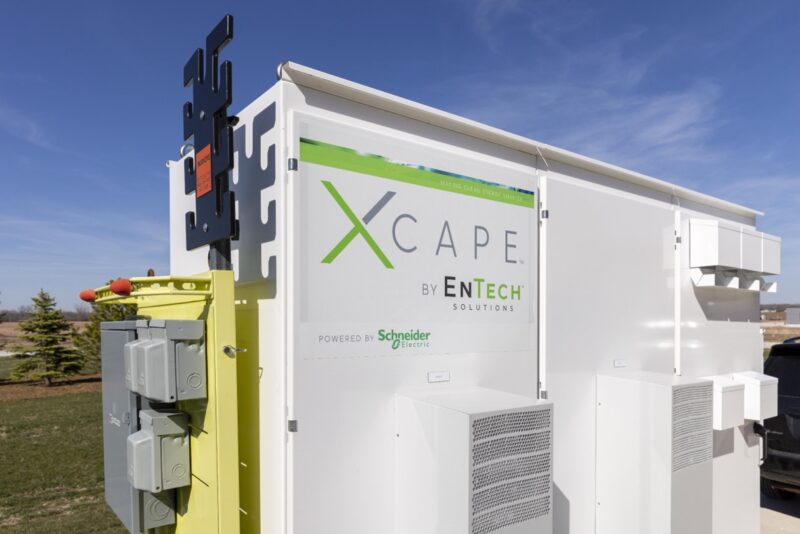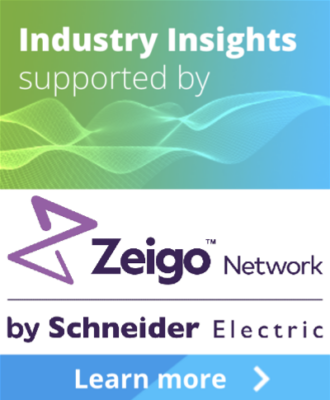Sign up for daily news updates from CleanTechnica on email. Or follow us on Google News!
Mid-sized companies are the engine of the global economy. The World Bank says small and medium-sized enterprises (SMEs) represent 90% of businesses globally. So, it’s safe to say that if we don’t get mid-sized companies on board, the energy transition won’t happen.
Saying might be easier than doing. SMEs have big hoops to jump through if they want to procure renewable energy. Their volume requirements are small; their consumption profile might be a poor fit for intermittent generation; some might simply lack the skills or resources to manage a complex and time-consuming tender process.
For many, teaming up in an energy-buying consortium to maximize negotiating leverage is the answer. But the challenges don’t completely disappear. You must find potential partners, and you must be confident there’s enough alignment between the parties to see an agreement through.
Let’s look at the benefits of joining forces and list the practical steps mid-sized companies can take to create an energy aggregation arrangement of their own.
What Is Energy Aggregation?
Energy aggregation happens when a group of businesses band together to purchase energy. Procurement might happen through a single developer or across multiple projects.
Aggregated PPAs (power purchase agreements) capture the benefits of buying at scale and make large group-led purchases of clean electricity possible. Buying as a consortium means SMEs can benefit from the negotiation, cost, and price advantages that come with a large bulk purchase.
Aggregated PPAs make procurement with other buyers more feasible. It works for medium-sized organizations or larger companies looking to purchase renewable energy on a smaller scale.
It cuts through complexity and extends the base of potential customers for smaller-scale projects.

The Upside Of Aggregated PPAs
Along with expanding access to clean generation sources, aggregation also delivers an essential business benefit: money saved.
The cost of renewables is going down every year, but SMEs have struggled to access lower prices. However, when multiple mid-sized companies partner to buy at bigger volumes, they can secure more significant discounts.
They can also mitigate risks related to price volatility, regulation, market events, operations, or financing — each with the power to eat into margins, stall construction, delay go-live dates, or reduce output once a project is operational.
Bringing Supply Chains Into Line
Many companies chasing net-zero targets have made great strides in reducing their direct (Scope 1) and indirect (Scope 2) greenhouse gas (GHG) emissions. Scope 3 emissions, however — those driven by supply chain partners — are much harder to grapple with.
Companies’ supply chain emissions are 11.4 times higher on average than their own emissions. If sustainability targets are going to be seen as credible, supply chain emissions must be included.
Aggregation agreements provide the opportunity to build new rules around Scope 3 emissions reduction into energy supply chains. Suppliers can be asked to commit to the Scope 3 standard for example and commit to regular reporting on their emissions from 15 GHG Protocol categories.
Digitizing procurement processes can also facilitate more sustainable procurement, eliminate inefficiencies, standardize contract processes, and ensure that emissions data from suppliers is being tracked and reported.
This post originally appeared on Zeigo, by Schneider Electric. This article is sponsored by Zeigo.
Have a tip for CleanTechnica? Want to advertise? Want to suggest a guest for our CleanTech Talk podcast? Contact us here.
Our Latest EVObsession Video
[embedded content]
I don’t like paywalls. You don’t like paywalls. Who likes paywalls? Here at CleanTechnica, we implemented a limited paywall for a while, but it always felt wrong — and it was always tough to decide what we should put behind there. In theory, your most exclusive and best content goes behind a paywall. But then fewer people read it!! So, we’ve decided to completely nix paywalls here at CleanTechnica. But…
Thank you!
Advertisement
CleanTechnica uses affiliate links. See our policy here.
- SEO Powered Content & PR Distribution. Get Amplified Today.
- PlatoData.Network Vertical Generative Ai. Empower Yourself. Access Here.
- PlatoAiStream. Web3 Intelligence. Knowledge Amplified. Access Here.
- PlatoESG. Carbon, CleanTech, Energy, Environment, Solar, Waste Management. Access Here.
- PlatoHealth. Biotech and Clinical Trials Intelligence. Access Here.
- Source: https://cleantechnica.com/2024/01/09/how-aggregated-ppas-create-clean-energy-options-for-smes/
- :is
- $UP
- 1
- 11
- 15%
- 36
- a
- access
- across
- advantages
- Advertise
- Affiliate
- aggregation
- Agreement
- agreements
- alignment
- also
- always
- an
- and
- answer
- appeared
- ARE
- around
- arrangement
- article
- AS
- At
- average
- BAND
- Bank
- base
- BE
- behind
- being
- benefit
- benefits
- BEST
- between
- Big
- bigger
- Bit
- board
- build
- business
- businesses
- but
- buy
- buyers
- Buying
- by
- CAN
- capture
- categories
- chain
- chains
- challenges
- chip
- clean
- clean energy
- cleantech
- Cleantech Talk
- come
- commit
- Companies
- completely
- complex
- complexity
- confident
- consortium
- construction
- consumption
- content
- contract
- Cost
- create
- credible
- Customers
- cuts
- data
- Dates
- decide
- decided
- delay
- delivers
- Developer
- direct
- disappear
- discounts
- doing
- don
- Dont
- down
- driven
- each
- easier
- eat
- economy
- Electric
- electricity
- eliminate
- embedded
- Emissions
- energy
- Engine
- enough
- ensure
- enterprises
- essential
- events
- Every
- example
- Exclusive
- expanding
- extends
- facilitate
- feasible
- felt
- fewer
- financing
- Find
- fit
- For
- Forces
- from
- GAS
- generation
- get
- GHG
- Global
- Global economy
- Globally
- Goes
- going
- great
- greenhouse gas
- Group
- Guest
- happen
- happens
- harder
- Have
- help
- here
- higher
- How
- However
- http
- HTTPS
- if
- implemented
- in
- included
- inefficiencies
- into
- IT
- joining
- jpg
- jump
- Lack
- large
- larger
- latest
- Leverage
- like
- likes
- Limited
- links
- List
- Look
- looking
- lower
- made
- make
- manage
- many
- margins
- Market
- max-width
- Maximize
- means
- Media
- might
- Mitigate
- money
- more
- most
- much
- multiple
- must
- Need
- net-zero
- New
- news
- of
- on
- once
- operational
- Operations
- Opportunity
- Options
- or
- organizations
- originally
- Other
- our
- output
- own
- parties
- partner
- partners
- People
- plato
- Plato Data Intelligence
- PlatoData
- player
- podcast
- policy
- poor
- possible
- Post
- potential
- potential customers
- power
- Practical
- price
- Prices
- process
- processes
- procure
- procurement
- Profile
- project
- projects
- protocol
- provide
- publish
- purchase
- purchases
- put
- Read
- Reader
- reduce
- reducing
- reduction
- regular
- Regulation
- related
- Renewable
- renewable energy
- Renewables
- Reported
- Reporting
- represent
- Requirements
- Resources
- risks
- rules
- safe
- saved
- say
- says
- Scale
- Schneider Electric
- scope
- secure
- see
- seen
- should
- significant
- simply
- single
- skills
- small
- smaller
- SMEs
- So
- some
- Sources
- Sponsored
- standard
- Steps
- Stories
- strides
- suggest
- suppliers
- supply
- supply chain
- Supply chains
- support
- Sustainability
- sustainable
- T
- Take
- Talk
- targets
- team
- teaming up
- Tender
- than
- that
- The
- the world
- their
- then
- theory
- There.
- they
- this
- those
- Through
- time-consuming
- times
- tip
- to
- together
- tough
- transition
- Updates
- Upside
- us
- uses
- Ve
- Video
- Volatility
- volume
- volumes
- want
- was
- we
- What
- when
- while
- WHO
- with
- works
- world
- World Bank
- write
- Wrong
- year
- you
- Your
- youtube
- zephyrnet









